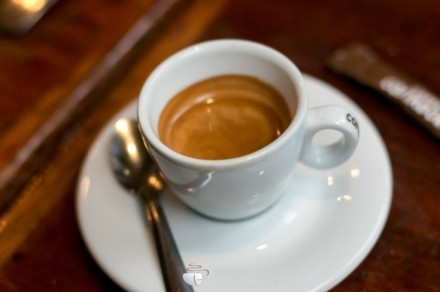The inheritance of coffee the spread and development of coffee beans
The world's first bag of coffee beans slowly left the African continent in the 6th century AD and developed for thousands of years. In 1530, the first coffee shop appeared in Damascus, north of the Ottoman Turkish Empire, and the word "coffee" appeared in British newspapers in 1601. For more than a thousand years, coffee trees have blossomed everywhere in the most livable land in the world, and finally formed major producing areas. At present, coffee is grown in more than 70 countries in the world, especially in the tropics above 1000 meters above sea level. The world-famous coffee varieties are Colombian coffee, Brazilian coffee, Ethiopian coffee, Indonesian Mantenin coffee, Italian blended coffee (blended by more than two kinds of coffee) and so on. Coffee beans are divided into three types: Arabica coffee beans, Robusta coffee beans and Lieberica coffee beans. The coffee beans in each producing area have their own characteristics from color to taste. Coffee experts generally believe that no kind of coffee is the best in the world, only the likes and dislikes of coffee drinkers.

Central America and the Caribbean: including Costa Rica, Cuba, Jamaica, Mexico and other places. Among them, the most famous Jamaican Blue Mountain coffee is known as "the most expensive coffee in the world", with a domestic price of about 1200-1500 yuan per kilogram. Blue Mountain Coffee is slightly sour, supple and delicate, and pure Blue Mountain coffee is small and expensive, so the cheaper "Comprehensive Blue Mountain" (Blue Mountain Blend) or "Blue Mountain" (Blue Mountain Style) coffee on the market is usually a mixture of Colombian beans.
South America: just mentioning the names of Brazil and Colombia seems to smell the smell of coffee. Since the first introduction of coffee trees in 1720, Brazil has become the world's largest coffee exporter, accounting for 30% of the world's output. In the mid-1990s, two frost attacks in Brazil reduced coffee production and raised international coffee prices by 50 per cent. So far, the climate in Brazil is still one of the main indicators for coffee futures traders to predict the trend of coffee. The best quality coffee in Brazil is produced in the Serrado region of the state of Minas Gerais, which is popular among European coffee manufacturers for its excellent balance, rich cocoa aroma and high sweetness.
Colombia is the world's largest exporter of Arabica coffee. The coffee in the central mountains is centered around Medellin, while the eastern mountains are centered in Bogota. The central mountains are dominated by volcanic soil, so the acidity of high-quality coffee is higher, while in the eastern producing area, which is dominated by sedimentary rock and soil, the acidity of coffee is very low and the aroma is higher.
Africa: coffee produced in Africa is mostly fruity, red wine, bright acidity and cheerful. When it comes to African coffee, Kenya represents. At the beginning of the 20th century, bourbon coffee was brought to Kenya from Yemen by the Catholic Austen Church and began to attract coffee merchants all over the world.
And the famous coffee in Ethiopia, the hometown of coffee, can also be found everywhere. From wild coffee to modern plantations, people can still find ways to grow coffee here. It has two producing areas: "Hara" in the Hara Plateau in the northeast and "Yeka Snow Fine" in the middle. Hara coffee has a charming aroma, most of which are sun-dried and light in taste, and are often called "red wine in coffee". Yeka snow caffeine is favored by Germans and Japanese for its rich floral aroma and citrus sweetness.
Asia: the hero of Asian coffee is the Dutch, who brought coffee to Sumatra in the 17th century, which gave birth to Manning Coffee. At the end of the 18th century, the spread of coffee rust basically destroyed the Indonesian coffee industry, so Indonesians had to switch to disease-resistant Roberto specialty coffee, but Mantenin is still famous in Indonesia-full grains and syrup taste, after medium and deep baking, the taste is like a sunny day in a tropical summer afternoon.
The Asian region also mentions Vietnam, which began to grow coffee during the French colonial period, mostly Javanese and bourbon varieties, mainly Robart coffee beans, which are moderate and well-balanced.
Important Notice :
前街咖啡 FrontStreet Coffee has moved to new addredd:
FrontStreet Coffee Address: 315,Donghua East Road,GuangZhou
Tel:020 38364473
- Prev

Where does coffee come from? coffee originated in Ethiopia.
Ethiopia in East Africa means the land inhabited by people tanned by the sun in ancient Greek. Ethiopia's unique cultural tradition, spectacular scenery, pleasant climate, rich animal and plant resources, important places of interest, hospitality and friendly people make it one of the major tourist destinations in Africa. The name Coffee comes from kaffa in Ethiopia, you know.
- Next

Joyce and Coffee Coffee and the Cultural History of celebrities
Corresponding to the hundred poems of wine fighting in the East, coffee has also been endowed with the status of legendary potion in western literature. Today, Espresso and its derivatives are synonymous with literary coffee, and the birth of Espresso is closely related to the eastern Italian city of Trieste. Although the celebrity list of cafes here is not as dazzling as that of Rome and Paris, it also has its own pride.
Related
- How did the Salvadoran coffee industry develop in Central America?
- What exactly does the golden cup extraction of coffee mean?
- The Origin of Coffee flower
- [2023 Starbucks World Earth Day] there are more meaningful things besides free Starbucks coffee!
- What kind of coffee is there in Spain? 9 Flavors of Spanish Coffee
- Aromatic African coffee| Kenya's coffee culture and historical production area
- Liberica Coffee Bean knowledge: the characteristics of Liberian Coffee beans of the three original species of Coffee beans
- The origin and formula of Spanish latte introduces the taste characteristics of Bombon coffee in Valencia, Spain.
- How to adjust the solution of over-extracted coffee
- What is the tasting period of coffee beans? What is the period of coffee and beans? How should coffee wake up and raise beans?

